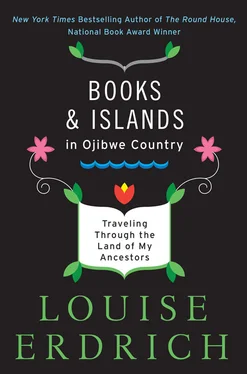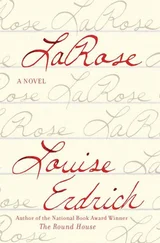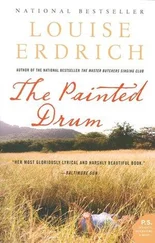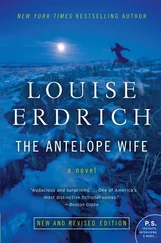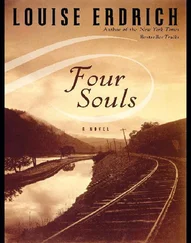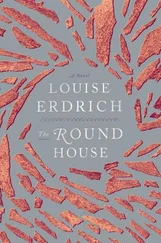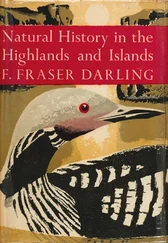The Bay of Baby Spirits
Looking on a map at the little bay we are going to travel, my friend, who is in training as a doulah or birth assistant, says no wonder it is known as the home of baby spirits — the bay is thin and winding and looks like a fallopian tube. The bay of little spirits is a courting bay, the water shallow and romantic. To either side, the rich young undergrowth is said to be inhabited by the spirits of babies who choose humans, as they pass, to come and live with. Traveling slowly down the shallow channel, I stroke the tender spot upon Kiizhikok’s head, the fontanel, which has nearly shut. I’ve heard it said that until it does the baby still hears spirits talking. If they’re out there, if they’re talking to her, I hope they are warning her that it is dangerous to hide stones in her mouth.
Suddenly we come upon three young moose, gangly and playful. Instead of climbing onto land, one clomps into the water and then swims along beside us. Her long rabbity ears cock toward us from time to time, and she doesn’t seem particularly frightened. Her Joe Camel nose held high, she rolls her eyes at us. Those odd Twiggy legs and knobby knees work smoothly, powerfully. A wonderful swimmer, she at last veers away into the reeds and cattails. I am very surprised that this happened. According to John Tanner the wary moose is the most difficult of animals to hunt. But then, these are very young moose and our baby is in the boat. I harbor the irrational notion that animals are curious about Kiizhikok and show themselves around her, that her presence is a kind of magnet to them. And it is true, not only do we see animals but they seem unafraid of her, like the otter, like the moose, and the constantly wheeling eagles and pelicans. The animals come close as if they want to get a good look at this child whose ancestors watched their ancestors, whose grandmother ate their grandmothers, whose father was stolen from among them by priests.
Mirage Islands
When the water is high like it is this year, large pieces of bog pull free of the lake bottom and drift all through the bays and channels. You fall asleep looking at a certain shoreline, memorizing the sweep of it, and by morning the shape has shifted and the bog has moved on. When these bogs attach to islands, they can change its shape instantly, but often they merely bounce against the island until they fall apart. Lodge owners get their guide boats out and push the bogs into the lake currents. Close up, rising out of deep water, they are deceptively solid looking. They are a rich biomass composed of reeds, young willow, wiikenh , cattails.
Cattails are a useful plant whose roots are edible, whose tails when puffed out are a perfect diapering material for the tender new bottoms of Anishinaabeg babies, used to stuff in the bags of cradleboards. Reeds were used for floor covering, woven into mats. Wiikenh, or sweetflag, is the star of the floating bog, though, a medicine with every possible use. “Where there is wiikenh, there are Anishinaabeg,” says Tobasonakwut. Wiikenh is the ultimate medicine. He investigates each floating bog, hoping to pick it easily, for when rooted it is difficult to wrench from the mud.
Looking at these bogs it is easy to see how, once, when a raiding party of Bwaanag had camped in Ojibwe country, they were driven out by use of a floating bog. The warriors entered the bog from underneath and swam it to the shore of the Bwaanag camp, like Birnam Wood come to Dunsinane. From that bog, they attacked and drove the Bwaanag out.
Massacre Island
It is not considered wise to point a finger at any island, especially this one. The Ojibwe use mouth or head to indicate direction, and are often humorously mocked for “pointing with the lips.” But it is impolite to point a finger at people, and the islands as well. Pointing at the islands is like challenging them. And you don’t want to challenge anything this powerful.
Massacre Island is a forbidden place. Recently, two men who tried to fast there were bothered the entire night by ghosts. As we approach the island, I feel its brooding presence. I can’t tell whether this island is a formidable place because of its history, or whether it possesses a somber gravity all on its own. But the very look of the place disturbs me. Massacre Island is located where the lake deepens. Sounds travel farther, the air thins, the waves go flat. Its rocks sloping down to the water are not the pale pink flecked granite of the other islands, but a heavy gray nearly black in places and streaked with a fierce red-gold lichen.
On this island, the Ojibwe wiped out an entire party of Sioux, or Bwaanag. As Tobasonakwut tells it, the entire island was ringed by Ojibwe canoes. At a signal, the zaasaakwe , the war whoop, a terrifying and a bloodthirsty shrill, was raised. From one canoe to the next, it traveled, a ring of horrifying sound. The canoes advanced four times. The zaasaakwe was raised four times. On the last time, the Ojibwe paddlers surged all the way forward, beached their canoes, and stormed the Bwaanag. He shows where the warriors died, including one who staked himself into the earth and fought all comers who entered his circle, until he was overwhelmed.
Atisigan
The paint, atisigan , should be patented, says Tobasonakwut. It is an eternal paint. The Ojibwe Sharpee paint. It works on anything. When he was little he often watched the paint being prepared. It was used for other things, besides painting on rocks. For burial, for bringing people into the religion, for teachings, for decorating request sticks and Mide stakes.
The recipes for paints used by other tribes are often based on vermillion from outcroppings of cinnabar. The Inuit used blood and charcoal. Burnt plum seeds and bull rushes were mixed into a black paint by the Klamath, and many tribes used blue carbonate of copper. Later, as we walk the Kaawiikwethawangag, the Eternal Sands, I will find some of the mysterious ingredients of the Ojibwe atisigan at my feet, then jumping from the lake.
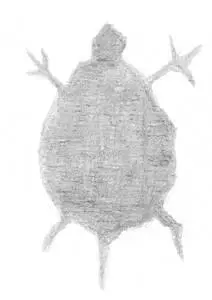
Obabikon
On a great gray sweep of boulder, high above Obabikon channel, a rock painting gives instructions to the spirit on how to travel from this life into the next life. Such a journey takes four days and is filled with difficulties. For that reason, loved ones provide the spirit with food, spirit dishes, and encouragement in the form of prayers and songs. We climb to the painting with tobacco and leave handfuls by the first painting, a line with four straight, sweeping branches, and the second painting, which is of a mikinaak , or turtle.
The mikinaak has immense significance in Ojibwe life. As there are thirteen plates in its back, it is associated with the thirteen moons in the yearly cycle, and also with women. It was women, says Tobasonakwut, who were responsible for beginning Ojibwe mathematical calculations. They began because they had to be concerned with their own cycles, had to count the days so that they would know when they would be fertile. They had to keep close track of the moon, and had to relate it to their bodies in order to predict the births of their children. And they had to be accurate, so that they could adequately prepare. In a harsh Ojibwe winter, giving birth in an unprotected spot could be lethal. Women had to prepare to be near relatives and other knowledgeable women. Mathematics wasn’t abstract. It was intimate. Dividing and multiplying and factoring were concerns of the body, and of survival.
Whitefish Bay
To get into Whitefish Bay from where we are will require lots of sandwiches, water, a full gas tank, and two extra five-gallon plastic gas containers that ride in front when full. We start early on a tremendously hot morning. By now, I’m much happier in a boat. I still have the usual fantasy, on starting out, involving the rock and the swim to shore towing Kiizhikok, but by now I’m used to it. I try to move on quickly and enjoy the breeze whipping with heroic freshness off the lake. Whitefish Bay connects to Lake of the Woods via a peculiar contraption called a boat trolley. This is a suspicious-looking, wood-ribbed basket that the boat is floated onto. By sheer muscle power, turning a big red metal wheel that moves the trolley basket along a set of metal tracks, the boat is painfully transferred. Once on the other side of the concrete channel, we reload ourselves and start off, into Whitefish Bay.
Читать дальше
